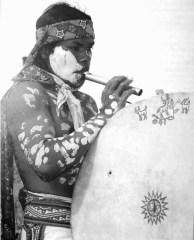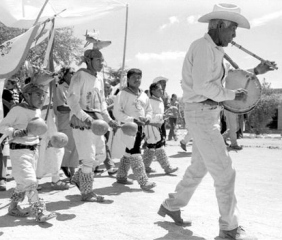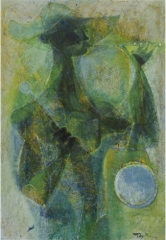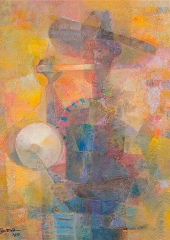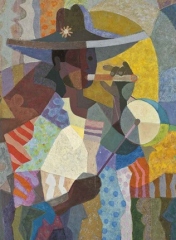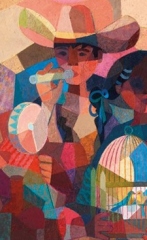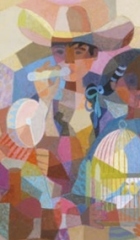South America
archaeology to today
| "“our cavalcade entered the town ... and every house resounded with the noise of trumpets, tabors, and pipes. ..." Before feasts they " select a number of Indians who are to be the dancers ... The music is a pipe and tabor, and the most extraordinary of their motions some awkward capers; in short, the whole is little to the taste of an European. ... then one of them plays on a pipe and tabor, whilst others dance, as they call it, though it is not more than moving confusedly
|
|||||||||||
Argentina |
|||||||||||
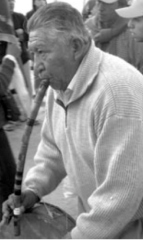 player player |
|||||||||||
|
South America with dancers video Txistu from Banfield |
||||||||||
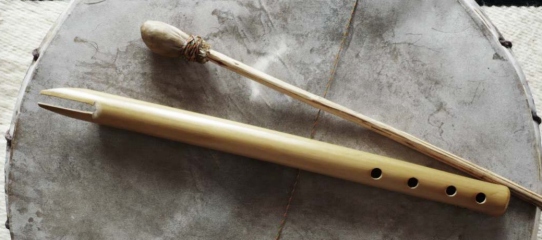 kamacheña, end-blown flute kamacheña, end-blown flute |
|||||||||||
The geographical area where the kamacheña (flute) is built and used comprises northwestern Argentina and southern Bolivia When performed together with the kamacheña, the caja (drum) is usually fastened by a loop of leather to the right wrist of the male musician, who holds the waqtana or guastána, the stick or mace, in the same hand. Andean traditional gender taboos do not allow women to play aerophones (wind instruments). The Andean traditional calendar lays down that each musical instrument can only be performed during a specific time of the year and for specific purposes (usually related to agriculture and other traditional practices). The kamacheña is played during the awti pacha or "dry season" (comprising from Carnival to All Saints' Day). Hence, its sound will be heard at winter festivals, e.g. during the feast of San Roque (mid-August) and, of course, All Saints celebrations (early November) and Carnival (February and March). |
|||||||||||
Bolivia |
|||||||||||
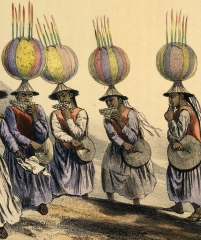 19th century Aymara Indians 19th century Aymara Indians |
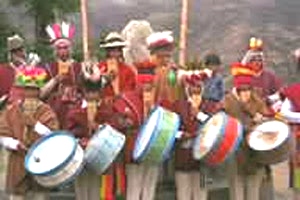 1992 Qhochipata Indians 1992 Qhochipata Indians |
||||||||||
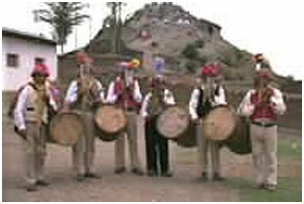 1992 Tambocusi Indians 1992 Tambocusi Indians |
Pincullo is also called pincollo, pinvollo, pinquillo, pincuillo opingollos and in Quichua aymará pinkiyllu, pinkillo In today’s Bolivian and Peruvian Andes, pinkullu or pinkillu duct flute performance is exclusively male, strongly associated with courtship and usually restricted to the rainy growing season between All Saints (November) and Carnival (February or March). The instrument’s sound is widely claimed to attract rain and to cause the crops to grow. The name applies equally to the three-hole pipe, played with a drum by a single player, or to five-, six- or seven-hole duct flutes which are typically played in consort. |
||||||||||
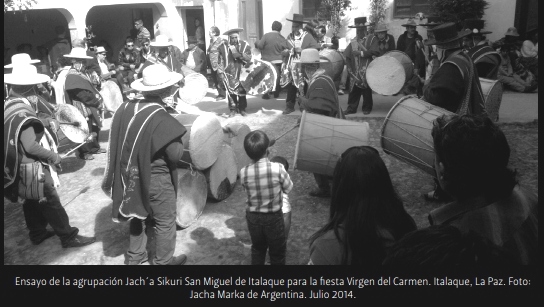 2014 2014 |
|||||||||||
|
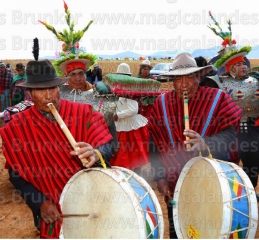 |
||||||||||
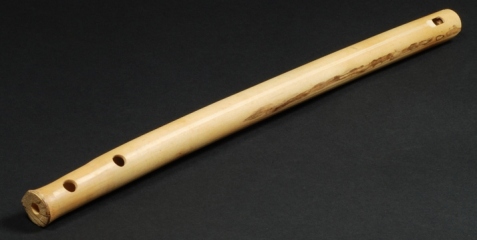 |
Waka Pinquillo the duct flute of Bolivia. It is made of cane about 45 to 50 cm long and 2.5 cm in diameter, with two fingerholes and one thumbhole, and a square opening at the duct. Overblowing produces multiple harmonics. | ||||||||||
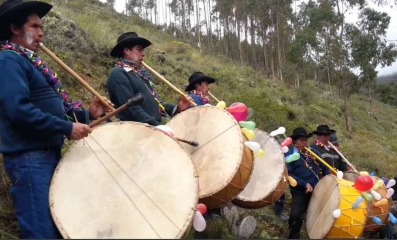 Waka pinquillo Waka pinquillo |
|||||||||||
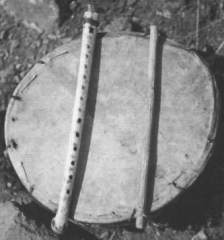 |
Kunfur Pinquillo (condor flute) or |
||||||||||
Chile |
|||||||||||
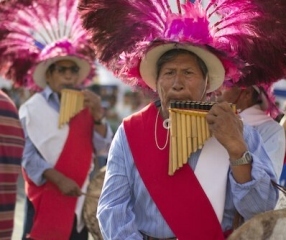 procession procession |
|||||||||||
Costa Rica |
|||||||||||
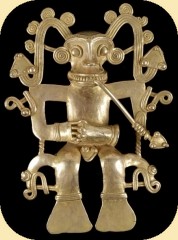 400-1500 pendant 400-1500 pendant |
for more pre-Colombian images see here |
||||||||||
Ecuador |
|||||||||||
 |
|||||||||||
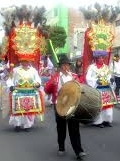 |
|||||||||||
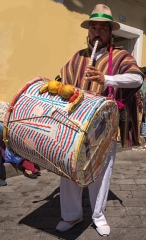 |
|||||||||||
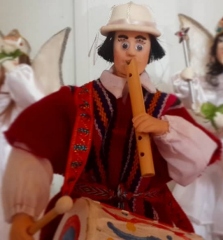 statuette statuette |
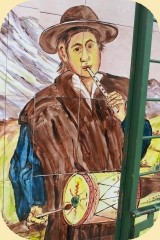 tile picture, Quito tile picture, Quito |
||||||||||
Guatemala |
|||||||||||
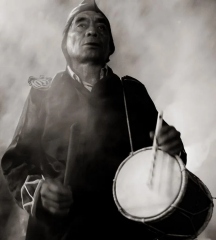 2005 photog.Stan Raucher 2005 photog.Stan Raucher |
|||||||||||
Panama |
|||||||||||
A gold figurine of a man playing what may be a vertical flute and rattle at the same time. Veraguas culture. |
|||||||||||
Peru |
|||||||||||
Also see: double pipes gallery |
|||||||||||
video, panpipes and drum |
|||||||||||
| 18th century pipe and tabor playing for dancing, (Spanish and Peruvian influence) | |||||||||||
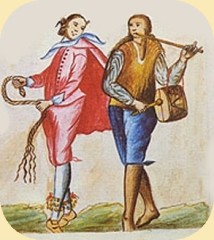 |
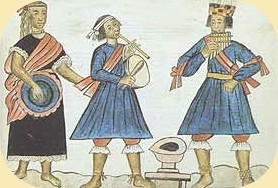 |
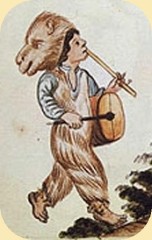 |
|||||||||
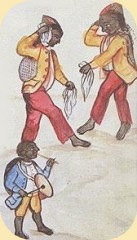 |
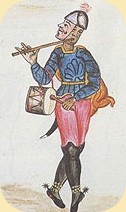 |
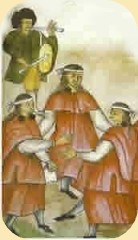 |
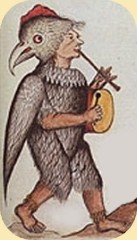 |
||||||||
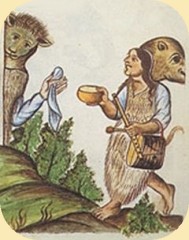 |
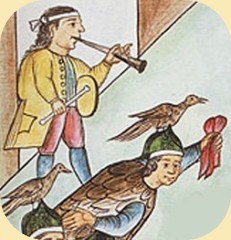 |
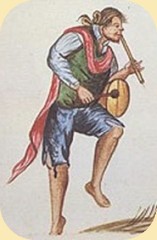 |
|||||||||
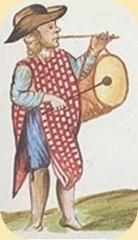 |
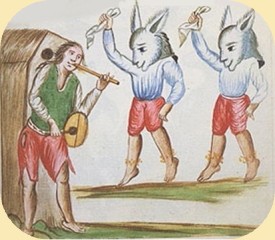 |
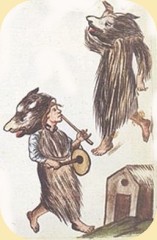 |
|||||||||
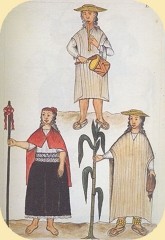 |
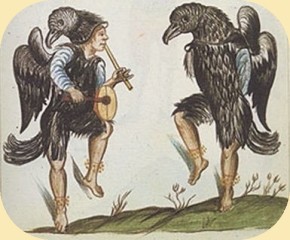 |
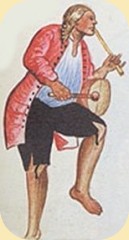 |
|||||||||
Between 1782 and 1785 the Spanish Bishop of Trujillo made a trip of several years around the northwest of Peru to discover the region of which he was in charge. When he was recalled he sent the king of Spain a series of more than 1,400 illustrations made during that trip. These images are the “Trujillo Codex of Peru” or “Codex Martínez Compañón”. Eighteen of the images from the Trujillo codex contain the scores of 20 musical pieces. |
|||||||||||
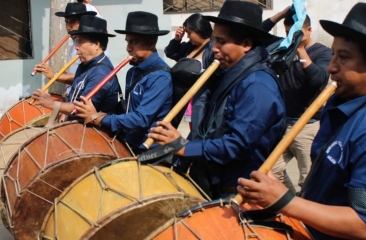 procession procession |
|||||||||||
|
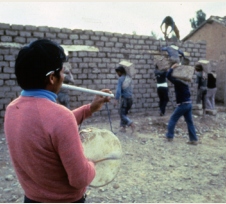 playing whilst building wall playing whilst building wall |
||||||||||
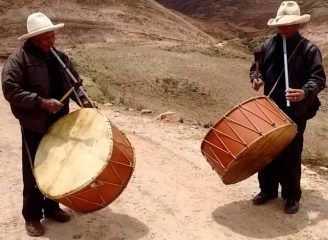 two players two players |
|||||||||||
| panpipes and drum | |||||||||||
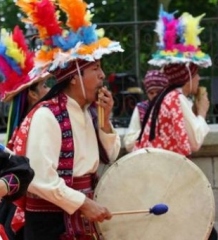 Taquile Taquile |
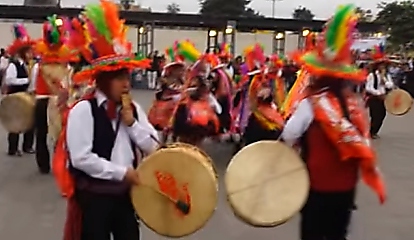 |
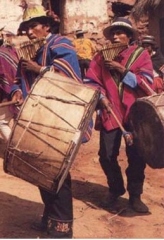 |
|||||||||
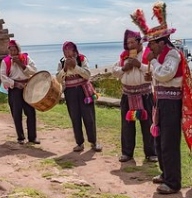 entertaining tourists entertaining tourists |
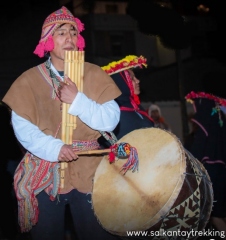 Sikuris Sikuris |
||||||||||
| Annual competition between large bands with dancers: | |||||||||||
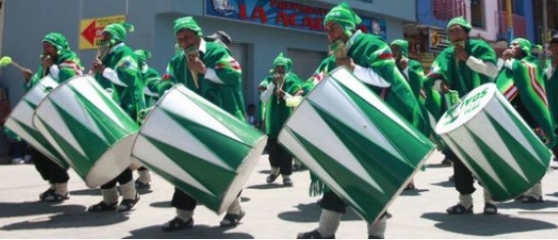 |
|||||||||||
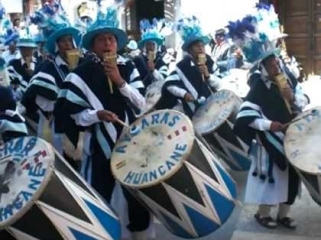 |
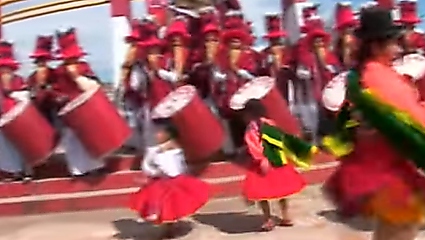 |
||||||||||
| Cuzco archangel | |||||||||||
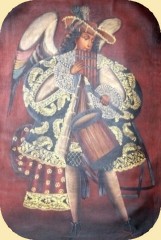 |
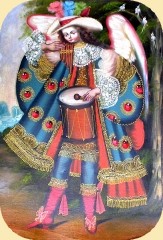 |
||||||||||
Mexico |
|||||||||||
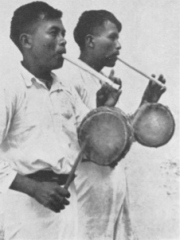 1939 1939 |
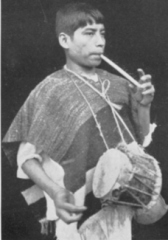 1939 1939 |
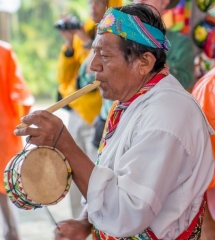 |
|||||||||
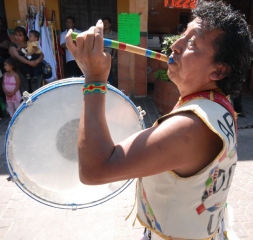 Tlaquepaque, Jalisco Tlaquepaque, Jalisco |
|||||||||||
Transhumara 1998 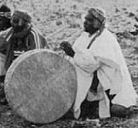   |
|||||||||||
from Veracruz - voladores |
|||||||||||
 |
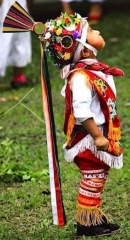 child child |
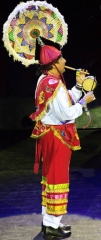 Yacatan Yacatan |
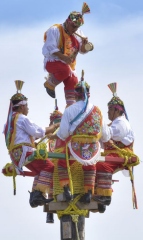 at top of pole at top of pole |
||||||||
 on the ground on the ground |
 statue statue |
||||||||||
| from Oaxaca - square drum and pipe | |||||||||||
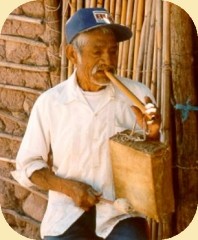 |
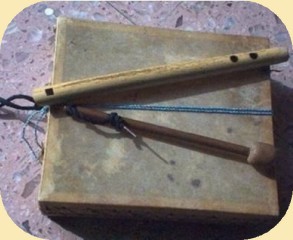 |
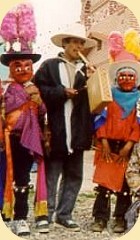 |
|||||||||
Paintings by Romeo Tabuena |
|||||||||||
top of page
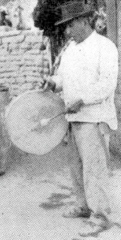
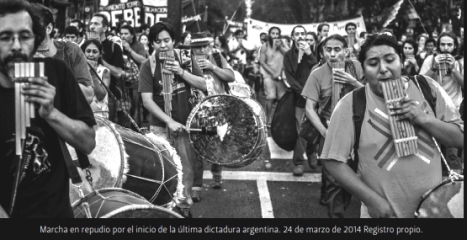 panpipes and drums in
panpipes and drums in 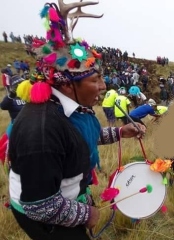
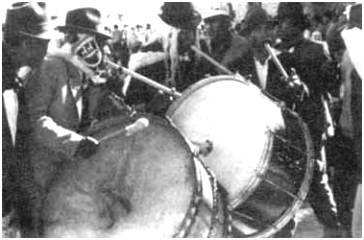
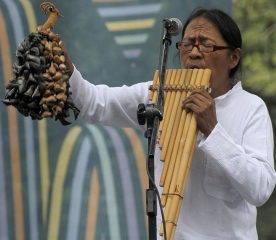
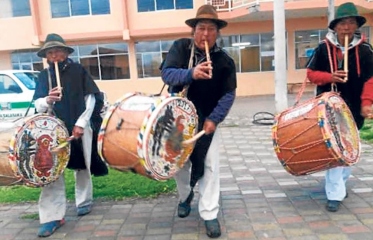
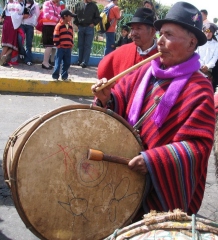
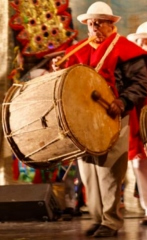
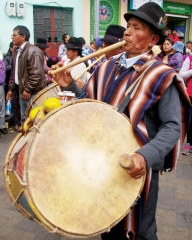
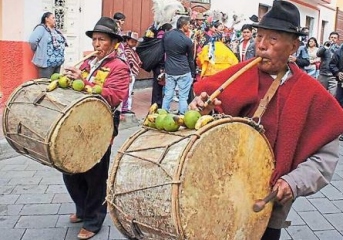
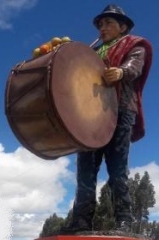
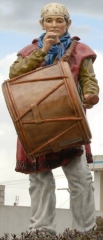
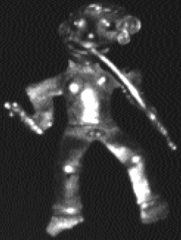
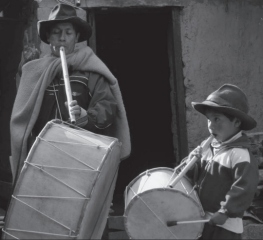
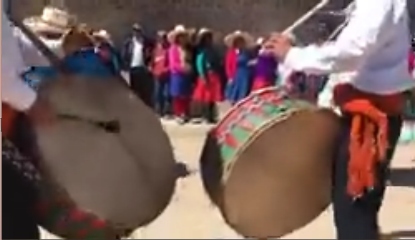 playing for
playing for 